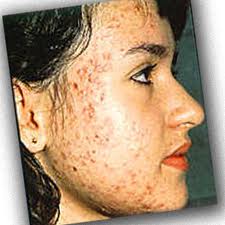Highlights
How to develop and maintain a building asbestos operations and maintenance (O&M) program.EPA action in Libby, Montana
Read about asbestos contaminated vermiculite | en español (PDF) (5 pp, 126K, about PDF).
Read about the asbestos program's January 2007 - June 2009 accomplishments.
Tremolite Asbestos (Image Source: U.S. Geological Survey)
Why is asbestos dangerous?
Asbestos fibres are present in the environment in Great Britain so people are exposed to very low levels of fibres. However, a key factor in the risk of developing an asbestos-related disease is the total number of fibres breathed in. Working on or near damaged asbestos-containing materials or breathing in high levels of asbestos fibres, which may be many hundreds of times that of environmental levels could increase your chances of getting an asbestos-related disease.
When these fibres are inhaled they can cause serious diseases which are responsible for around 4000 deaths a year. There are four main diseases caused by asbestos: mesothelioma (which is always fatal), lung cancer (almost always fatal), asbestosis (not always fatal, but it can be very debilitating) and diffuse pleural thickening (not fatal).
Remember, these diseases will not affect you immediately but later on in life, so there is a need for you to protect yourself now to prevent you contracting an asbestos-related disease in the future. It is also important to remember that people who smoke and are also exposed to asbestos fibres are at a much greater risk of developing lung cancer.
Why Do You Need to be Concerned About Asbestos?
Asbestos is a mineral fiber that has been used commonly in a variety of building construction materials for insulation and as a fire-retardant. Because of its fiber strength and heat resistant properties, asbestos has been used for a wide range of manufactured goods, mostly in building materials (roofing shingles, ceiling and floor tiles, paper products, and asbestos cement products), friction products (automobile clutch, brake, and transmission parts), heat-resistant fabrics, packaging, gaskets, and coatings.When asbestos-containing materials are damaged or disturbed by repair, remodeling or demolition activities, microscopic fibers become airborne and can be inhaled into the lungs, where they can cause significant health problems.
Most Common Sources of Asbestos Exposure:
- Workplace exposure to people that work in industries that mine, make or use asbestos products and those living
near these industries, including: - the construction industry (particularly building demolition and renovation activities),
- the manufacture of asbestos products (such as textiles, friction products, insulation, and other building materials), and
- during automotive brake and clutch repair work
- Deteriorating, damaged, or disturbed asbestos-containing products such as insulation, fireproofing, acoustical materials, and floor tiles.
On this Web site:
- Basic Information
- What is asbestos?
- Asbestos health effects
- Where can asbestos be found?
- What if I have asbestos in my home?
- Where can I find an accredited laboratory to test for asbestos?
- EPA's role in asbestos
- Other federal asbestos efforts
· Where You Live -- Get contacts for asbestos information in each EPA regional office and in the states.
· Vermiculite -- Learn about asbestos-contaminated vermiculite products and asbestos contamination in Libby, Montana.
· Naturally Occurring Asbestos -- Learn about reducing exposure to asbestos that is present in naturally-occurring rock formations in certain areas of the U.S., including California.
· Asbestos in Schools / Asbestos en Escuela -- Read about EPA's program to keep children safe from asbestos found in school buildings. en español.
· Asbestos in Your Home -- Read about what to do if you find asbestos in your home.
· Asbestos in Products & Buildings -- Read EPA's publications on asbestos in products and buildings.
· Asbestos Laws & Regulations -- Find links to the laws, EPA's regulations and policy guidance relating to asbestos.
· For Asbestos Abatement Professionals -- Find out how you can take training to become an asbestos abatement professional and learn about state asbestos accreditation programs.








